The ESG biodiversity business case

Anna Zakrisson
CSO at iimpcoll
2023-08-08
11 min


Biodiversity encompasses the number of species, genetic variation, and their complex interplay in ecosystems.
Biodiversity loss and ecosystem collapse pose significant threats to humanity. Over 75% of global food crop types rely on animal pollination. Biodiversity loss leads to reduced crop yields and fish catches. It also increases economic losses from flooding and other disasters while causing the loss of potential new sources of medicine.
Pollution, land use changes, overexploitation, invasive species, and climate change are the main drivers of this ongoing deterioration. Researchers warn that the world may be experiencing the sixth mass extinction event, with a rate of biodiversity loss unseen since earlier mass extinctions. Recovery from such a catastrophe may take millions of years for ecosystems to "restore."
Biodiversity plays a crucial role in sustaining human health and productivity. Ecosystem products and services like food, fresh water, and fuel sources are essential for our survival. If these services decline due to biodiversity loss, it can have severe consequences for human health. This includes indirect impacts on livelihoods, income, migration, and an increased potential for political conflict.
The diversity of microorganisms, flora, and fauna is also vital to medical and pharmacological science. Earth's biodiversity offers potential treatments for a variety of diseases and health problems. Hence, global biodiversity loss puts people's health and well-being at risk.
What is ESG and what must my business do when? Check out our blog posts on these topics:
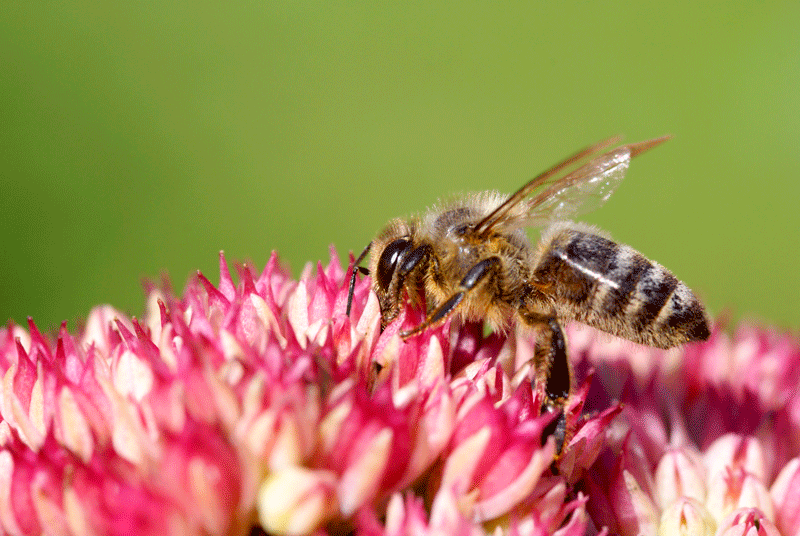

Financial Aspects of Biodiversity Loss – the cost of inaction
Unfortunately, biodiversity loss and related issues have often been considered soft topics. This has resulted in a lack of hard financial incentives to act. However, it should be noted that in 1997, Robert Costanza and his colleagues calculated the global value of ecosystem services at $33 trillion annually. This equates to the total global GDP at that time.
The economic and social costs of inaction would be immense. From 1997 to 2011, the world already lost an estimated €3.5-18.5 trillion per year in ecosystem services, with an additional estimated €5.5-10.5 trillion per year lost from land degradation. Biodiversity is vital for global food security, and its loss jeopardizes our food systems and nutrition. Moreover, biodiversity loss is closely intertwined with and worsens climate change.
Globally, more than 60,000 species with medicinal, nutritional, and aromatic properties are traded annually for various purposes. The worth of the trade in medicinal plants alone is more than USD 2.5 billion.
In the EU, the conservation of marine areas is estimated to bring an annual profit of €49 billion to the seafood industry. Similarly, the protection of wetlands is estimated to save €50 billion annually for the insurance industry. Moreover, preserving biodiversity will safeguard industries heavily reliant on nature, such as real estate, mining, and tourism, from potential decline.
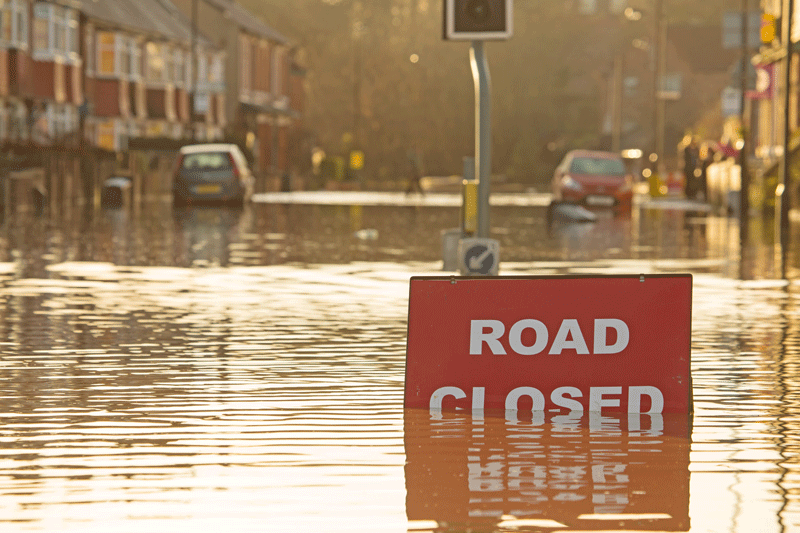

How biodiversity loss halts medical progress and increases disease transmission – and what we can do about it…
Natural products are highly sought after in biomedical research and medicine. Synthetic molecules often draw inspiration from natural compounds, emphasizing the importance of biodiversity in developing new treatments. Traditional medicine plays a vital role in primary healthcare, serving approximately 60% of the global population, and is ingrained within healthcare systems. Communities rely on natural products for medicinal purposes, cultural practices, and sustenance.
However, biodiversity loss and land degradation have alarming consequences, including increased chances of infectious disease outbreaks. Deforestation, improper land use, and uncontrolled urbanization strongly correlate with disease transmission. Consequently, an increase in pandemics is anticipated in the years to come. Hence, this negative trend needs to stop, and you can be part of this positive change.


Using green infrastructure to increase biodiversity in urban settings
With over 50% of the world's population residing in urban areas, urbanization is a global phenomenon. However, the growth and expansion of cities endanger biodiversity. Buildings, roads, and parking lots destroy critical habitats for plants and animals, leading to habitat fragmentation. These developments alter nutrient deposition and water redistribution, further threatening biodiversity. This situation requires urgent attention. Achieving a sustainable balance between human needs and natural ecosystems poses significant challenges. But integrating green space into urban environments can provide one solution, especially in urban settings.
Green infrastructure, which includes engineered features incorporating natural elements like vegetation, supports ecological services in urban landscapes. Green infrastructure solutions include green walls, roofs, parks, and sustainable drainage systems. Furthermore, green infrastructure not only has a positive effect on biodiversity but also the urban water cycle and direct human health and well-being. Studies indicate that access to green infrastructure can significantly hasten recovery times for hospitalized patients. For example, exposure to natural plant elements can lead to an approximately 8% decrease in hospital duration, resulting in notable cost savings for patients and healthcare systems. Incorporating biodiversity in construction planning can have an array of indirect positive impacts, making it an intriguing business consideration.
Why not investigate how your company can implement green infrastructure at your site? Contact consulting@iimpcoll.com to get in contact with our in-house experts.
Learn more in our article "Green infrastructure can be part of your ESG work"
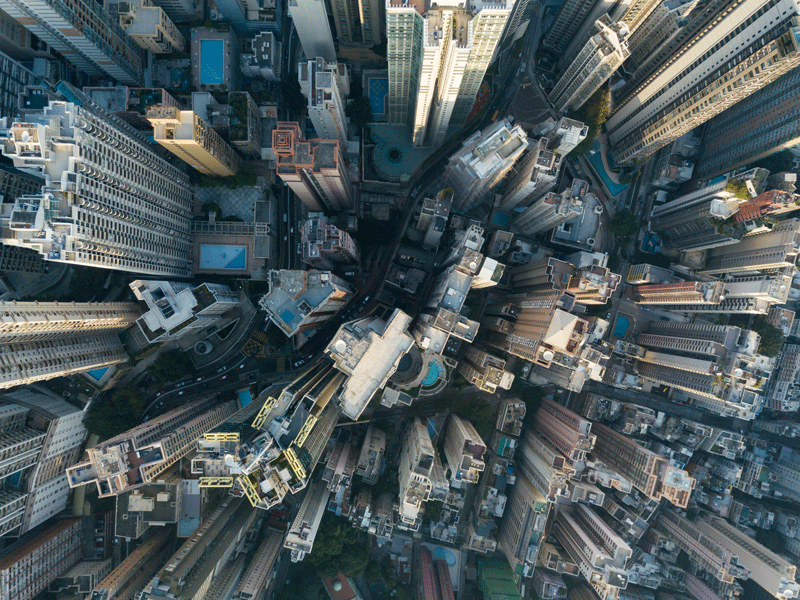
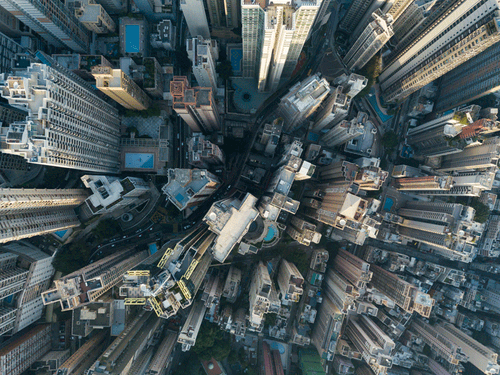
The capacity for urban rooftop farming is huge! Look at all these unutilized rooftops currently generating zero incomes.
Green infrastructure – not only for biodiversity but also as a flooding protection
Over one-third of available and renewable freshwater on Earth is consumed for agriculture, industrial, and domestic uses, often leading to water source contamination and endangering public health. Creative low-tech interventions like green infrastructure can positively impact the water cycle in urban settings. Adding back greenery to our cities not only adds biodiversity but also re-establishes the natural water cycle, such as groundwater recharging, and adds natural cooling due to increased evapotranspiration.
Green infrastructure solutions can also act as biodiverse stormwater solutions proofing your company site from flooding and stormwater damage.
One successful implementation of green infrastructure has been Augustenborg in Malmö, Sweden, which underwent an ambitious rebuilding project to address severe flooding and socioeconomic challenges. The area has transformed into an attractive neighborhood through ecosystem-based solutions, showcasing a successful sustainable urban makeover. Augustenborg exemplifies effective climate adaptation on a local scale. With 20+ years of experience, this eco-city represents an extensive social process. The project is a collaborative initiative involving the public housing company MKB, the City of Malmö, and various other organizations and local businesses.
The green Augustenborg fixed the flooding, increased biodiversity, increased financial flows, and improved living and business conditions in the region. This can also be done on a small or large scale in your area.
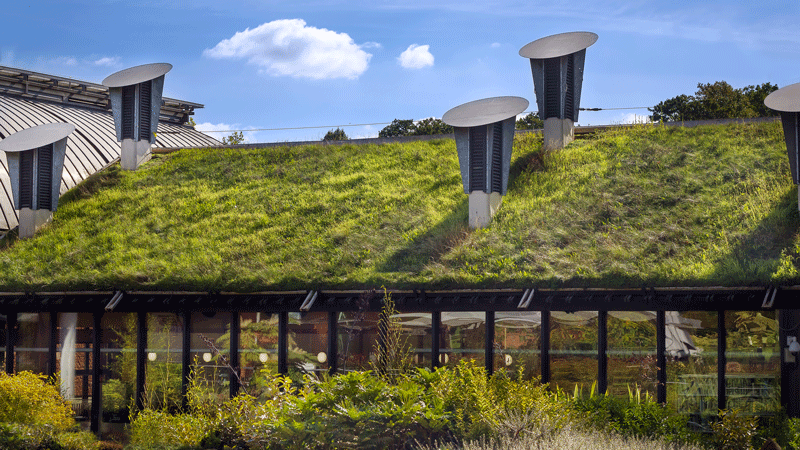
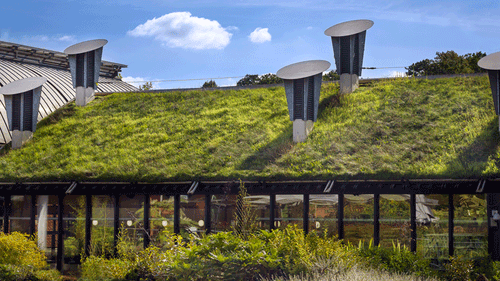
Urban farming – food production and increased biodiversity
Urban farming is on the rise. The conversion of derelict buildings, warehouses, and black rooftops to agricultural landscapes and rooftop gardens not only produces locally grown food but also increases urban biodiversity and improves the local microclimate. A report by Fior Markets projects the global urban farming market to grow from $2.77 billion to $16.14 billion by 2027.
Considering the predicted increase in population to more than 10 billion by 2050, we must amplify and find novel methods for food production in urban and rural areas. Higher-income levels in the developing world will increase calorie consumption, driving agricultural production needs up by about 70% within three decades. Many believe urban areas will play an increasing role in meeting this need.
It's important to recognize how urban farming impacts local communities, fostering awareness of nature and improving physical and mental health. It can also create good collaborations between local businesses and their communities.


Creating green corridors – your company can help!
Protecting valuable ecosystem services requires avoiding the isolation of natural ecosystems. Isolated islands hinder genetic exchange between populations of the same species.
Constructing an interconnected green infrastructure network is essential for facilitating the continuous movement of species and residents. However, challenges arise, such as the fragmentation of habitats caused by traffic routing through natural areas. This leads to habitat degradation and biodiversity loss, reducing the functionality of ecosystem services.
To secure interconnection, bio-corridors and eco-ducts offer connectivity in urban landscapes. Designing different elements of a green infrastructure network is necessary, considering interconnections and diverse species' needs. For instance, Oslo's project created highways for pollinators by planting nectar-giving species and green roofs, facilitating the overpass of bees throughout the city. Similarly, London's Hedgehog Highways initiative promotes the migration of hedgehogs.
In urban environments, using linear elements of green infrastructure like alleys, hedges, and waterways is crucial for enabling small wildlife species to migrate.
Combining various green infrastructure solutions is essential for maintaining and creating natural habitats that support diverse wildlife in urban environments. This approach emphasizes implementing ecological corridors to connect habitats, allowing seamless species movement between isolated blocks. Considering the biodiversity topic, including ecological corridors, from a city planning and single-project perspective achieves the best effect.


The capacity for urban rooftop farming is huge! Look at all these unutilized rooftops currently generating zero incomes.
Green walls as part of green corridors
Incorporating vegetation into vertical structures, known as green walls, is increasingly popular in densely populated cities and urban environments. These structures boost green infrastructure. Traditional green wall methods, like climbing plants, have been used since ancient times, such as the Hanging Gardens of Babylon (if they truly existed) and the Roman and Greek Empires. However, new engineering and technological advances have resulted in various designs that can be integrated into new and existing infrastructure.
From a local perspective, green walls and trellis systems provide numerous benefits to biodiversity. Even simple collections of flora offer invaluable resources to urban bird populations, such as food, shelter, and nesting habitats. On a larger scale, these green walls act as corridors or steppingstones for movement and dispersal, increasing the stability of urban biodiversity on a macro level, even in the face of unpredictable disturbances or changes.
Thanks to advancements in technology and engineering, creating living walls that mimic natural habitats and support biodiversity enhancement has never been easier. By optimizing a well-connected network managed through a landscape-scale approach, cities can mitigate the impacts of ongoing urbanization on local ecology. This promotes the maintenance of a healthy and thriving natural ecosystem.

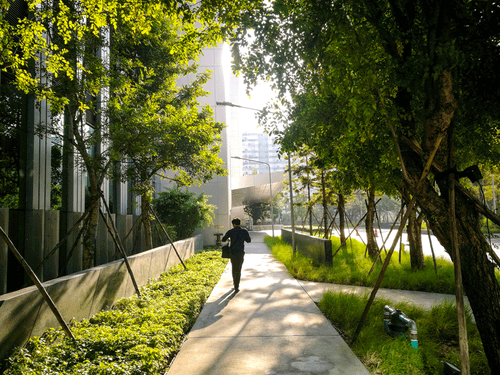
Trees give shade, cools the city, improves air quality, reduce flooding risks and increase biodiversity.
EU biodiversity regulations
The European Union took action for biodiversity by announcing a strategy in 2020 to protect nature and reverse ecosystem degradation caused by human activity. This strategy, part of the European Green Deal, aims to achieve climate neutrality in Europe by 2050. The biodiversity strategy aims to restore Europe's biodiversity by 2030, benefiting people, the climate, and the planet. In the post-COVID-19 context, the strategy aims to enhance societal resilience to future threats, including:
- Climate change impacts
- Forest fires
- Food insecurity
- Disease outbreaks
- Measures to protect wildlife and combat illegal wildlife trade.
The EU aims to address the biodiversity crisis by establishing protected areas covering at least 30% of Europe's land and sea. Additionally, efforts will focus on restoring scarce and degraded ecosystems across the continent. This strategy requires considerable resources, with the EU allocating €20 billion annually to achieve these goals. As a result, the EU holds a prominent global position in tackling the biodiversity crisis.
Natura 2000: nature restoration generates jobs in the EU
Nature restoration creates local jobs that directly and indirectly benefit communities by bringing life back to the area. Natura 2000 is an ecological network of protected areas. It aims to safeguard Europe's most valuable species and habitats. The network is established based on the 1979 Birds Directive and the 1992 Habitats Directive. Natura 2000 plays a pivotal role in protecting biodiversity in the European Union. The European database of Natura 2000 sites contains data compiled from member states of the EU. It is generally updated annually. View the Natura 2000 Network.
The EU Natura 2000 network supports 104,000 direct jobs managing and conserving protected areas. Additionally, there are 70,000 more indirect or induced jobs. This is based on an annual investment of €6 billion for network management and restoration. It is expected that biodiversity needs could create up to 500,000 jobs in the future.
In agriculture, 1.3 million of the 9.6 million farming jobs in the EU are directly or indirectly related to Natura 2000. The tourism sector employs 12 million people in Europe, with 3.1 million having connections to protected areas like Natura 2000.
Of the EU budget, 25% is dedicated to climate action. A significant proportion of this funding will be invested in biodiversity and nature-based solutions.
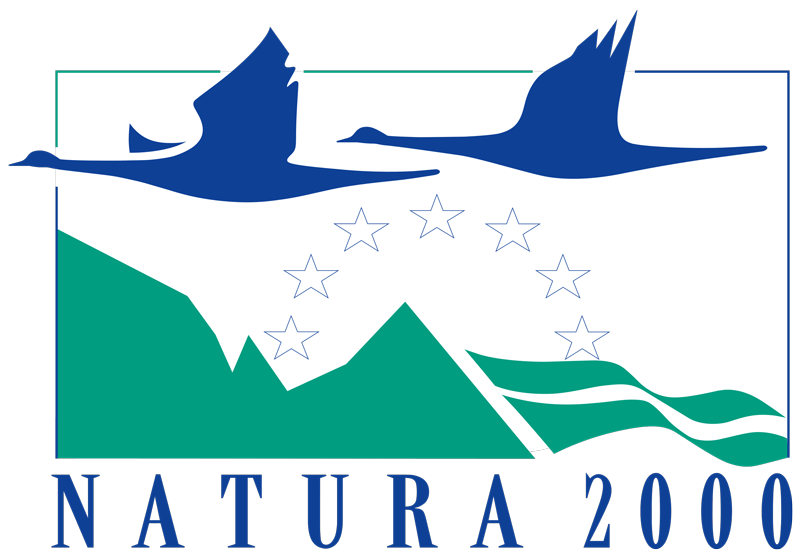

Credit: European Comission, CC BY-SA 4.0 via Wikimedia Commons
How to work towards ESG biodiversity goals
In the face of multiple systemic crises, solutions require collective action. The Global Goals cannot be achieved without businesses. They play a crucial role in accelerating progress. Every business and employee can contribute to creating a better future.
The SDGs differed from the Millennium Development Goals by involving businesses in their development. Companies played a role in shaping the agenda and committed to being accountable for their contributions towards achieving the Goals by 2030. The private sector's resources, innovation, and adaptability are crucial for attaining the ambitious set of 17 global Goals and 169 targets.
To comprehensively comprehend your organization's environmental impact, it is crucial to look beyond carbon emissions. While emissions are a facet of climate change, they do not provide a complete representation. Biodiversity is a critical topic intrinsically linked to climate change.
- Conduct a materiality assessment - it is recommended that business leaders conduct a material assessment to grasp the material impacts and dependencies of their organizations. This includes biodiversity. Check out our blog post on How to do a Materiality Assessment.
- Evaluate biodiversity risks and opportunities - Evaluate business risks and opportunities for nature and biodiversity. This evaluation can drive actions to help businesses comprehend the impact of biodiversity on financial and business outcomes.
- Set goals and raise awareness - Measure and set targets for land use, freshwater use, and ecosystem integrity. Useful tools are available for companies to measure and set biodiversity targets. Publicly commit to these goals to reduce waste and prioritize planet protection as a core business aspect, which may include signing corporate pledges.
- Learn about green infrastructure & nature-based solutions – nature-based solutions aim to restore nature, mitigate and adapt to climate change, and support the interests of local communities. By doing so, businesses can transform and regenerate landscapes. Addressing climate change and preserving biodiversity are interconnected goals. Reducing carbon emissions is crucial. Recovering species is also important.
All of this is possible but requires technological investment and ideological alignment. Protecting biodiversity goes beyond conservation; it involves planning for a better future.

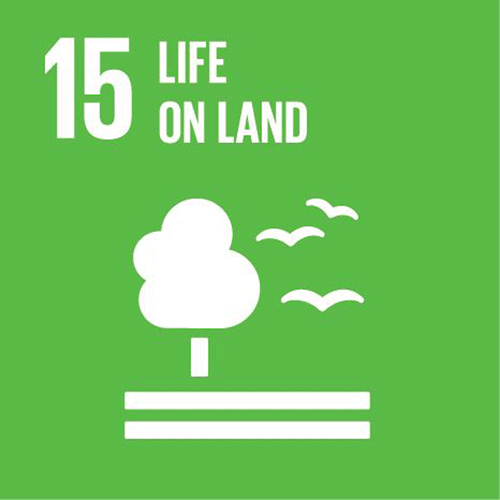
Credit: The United Nations.
Global Sustainable Development Goal 15: Life on Land
"Protect, restore and promote sustainable use of terrestrial ecosystems, sustainably manage forests, combat desertification, and halt and reverse land degradation and halt biodiversity loss."
Everyone can help to make sure that we meet the Global Goal 15: Life on Land. These are the main points under SDG 15. Some points may apply to your company, while others may not. Be creative! Maybe you can even start producing vegetables on your office roof? Maybe your new stormwater solution can be a biodiverse rain garden. Maybe your company can make changes to your value chain towards more sustainable practices.
Companies can contribute and do well for biodiversity and their employees in many ways. In the end, we all thrive in green surroundings.
- Conserve and restore terrestrial and freshwater ecosystems
- End deforestation and restore degraded forest
- End desertification and restore degraded land
- Ensure the conservation of mountain ecosystems
- Protect biodiversity and natural habitats
- Promote access to genetic resources and fair sharing of the benefits
- Eliminate poaching and trafficking of protected species
- Prevent invasive alien species on land and in water ecosystems
- Integrate ecosystem and biodiversity in governmental planning
- Increase financial resources to conserve and sustainably use ecosystem and biodiversity
- Finance and incentivize sustainable forest management
- Combat global poaching and trafficking
Contact iimpcoll for inspiration and support! consulting@iimpcoll.com
Learn the basics: How to write an ESG report - a step-by-step-guide